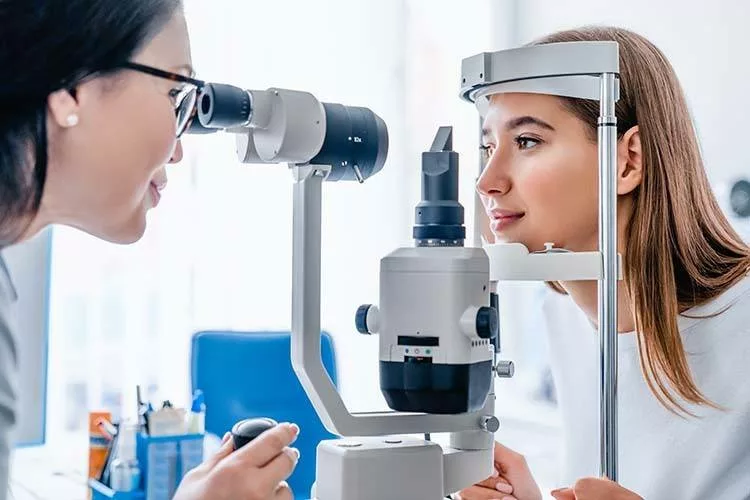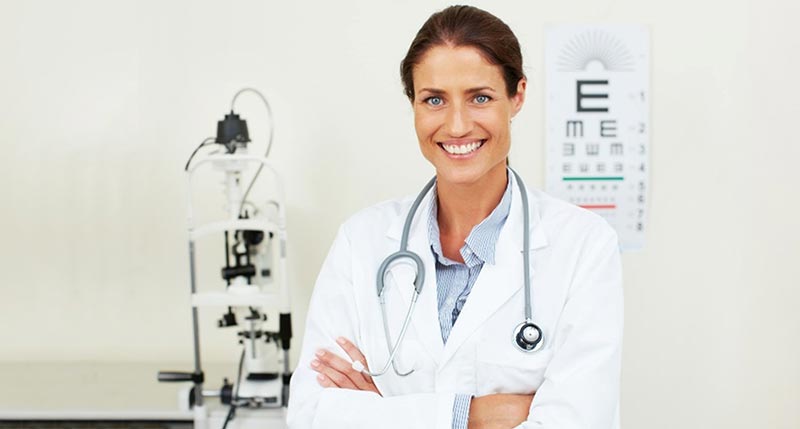The Comprehensive Eye Exam: What to Anticipate Throughout Your Visit to the Eye Physician
A see to the eye physician for an extensive eye exam is greater than a regular examination; it is a critical action in guarding your aesthetic wellness. From the preliminary conversation of your case history to the precision of the aesthetic acuity examination, each part of the test serves a specific objective. What specifically occurs during the eye health evaluation, and exactly how does it affect the prescription procedure? Understanding these components is crucial for those who wish to preserve optimum eyesight. As we check out each element, the significance of follow-up suggestions will certainly likewise become clear.
Initial Examination
The initial examination during an eye test works as a crucial structure for comprehending an individual's visual health and wellness requirements. This stage sets the tone for the whole assessment process, enabling the optometrist to gather vital info about the patient's medical background, way of life, and details vision concerns. By thoroughly examining any kind of pre-existing problems, medications, or previous surgical treatments, the eye care specialist can tailor the assessment to deal with individual demands effectively.

Additionally, the preliminary assessment is an opportunity for patients to articulate any kind of concerns or problems, fostering a collaborative relationship with their medical care service provider. This communication not only makes certain that the patient really feels notified and comfortable but additionally encourages them to get involved proactively in their eye health and wellness management. Collectively, these conversations enable the optometrist to devise a personalized examination plan, making certain optimal care and accurate medical diagnosis.
Visual Acuity Test
Beginning the core parts of an eye examination, the visual acuity test is created to examine the intensity and clarity of a person's vision. This essential assessment helps figure out just how well an individual can discern letters or icons at a standardized range, generally making use of a Snellen graph (Opticore Optometry). The chart consists of rows of letters that reduce in dimension inside out, with the person positioned at a popular range of 20 feet
During the test, the client is asked to cover one eye and read aloud the smallest line of letters they can see plainly. This process is duplicated for the other eye. The results are videotaped as a portion, with 20/20 vision showing regular visual acuity-- where the client can see at 20 feet what a person with regular vision can see at that distance.
The visual acuity test also determines prospective refractive errors such as nearsightedness, astigmatism, or hyperopia, which might demand corrective lenses. By developing a standard of visual efficiency, the examination is an important diagnostic tool that aids the eye care professional in establishing an ideal treatment strategy tailored to the individual's distinct visual needs.
Eye Wellness Assessment
Complying with the visual skill test, a detailed eye wellness evaluation is carried out to make certain the overall wellness of the eyes. This critical section of the eye exam entails a detailed analysis of both the inner and exterior structures of the eye.
Next, focus shifts to the inner frameworks. Through the usage of ophthalmoscopy or fundus digital photography, the retina, optic nerve, and blood vessels are thoroughly evaluated. This action is vital for recognizing conditions such as retinal detachment, glaucoma, or diabetic retinopathy. Oftentimes, pupil dilation is done to enhance visibility of the inner eye frameworks, although this may cause short-lived light sensitivity for the client.
In addition, intraocular stress is gauged to evaluate for glaucoma danger. This is typically done making use of tonometry, which can detect raised stress levels that may recommend prospective damage to the optic nerve. Collectively, these analyses create a detailed evaluation to keep ocular health and wellness.
Refraction and Prescription
Refraction is an advanced procedure performed by eye care experts to identify the specific lens power needed to fix refractive mistakes such as nearsightedness, astigmatism, hyperopia, and presbyopia. The next objective of this procedure is to his response analyze exactly how light bends as it passes via the eye, allowing the practitioner to determine whether restorative lenses are needed for boosted aesthetic skill.
Throughout the refraction procedure, the patient is asked to look with a phoropter, a device which contains various lenses. The specialist will systematically alter these lenses and ask the patient to contrast clearness between choices till the very best possible vision is attained. This procedure is vital in crafting a precise prescription that specifies the appropriate lens power for eyeglasses or get in touch with lenses.
The prescription derived from this treatment not just enhances vision but likewise acts as a structure for selecting ideal rehabilitative eyewear. It is important to guarantee that prescriptions are frequently updated, as modifications in vision can take place with time, stressing the significance of regular eye evaluations. This meticulous focus to information aids preserve clear, comfy vision in life.
Follow-Up Recommendations

During a follow-up check out, the eye physician will conduct a series of tests to assess aesthetic skill and look for any adjustments in vision that could require an upgrade to the prescription. Furthermore, the follow-up provides an opportunity to talk about any discomfort or issues experienced with present eyeglasses. Modifications can be made to ensure comfort and effectiveness, whether with lens adjustment or framework adjustments.
For people with ongoing problems such as glaucoma, diabetes-related eye problems, or macular deterioration, even more regular follow-ups might be necessary. These appointments are critical for handling and potentially reducing the progression of eye illness. Abiding by these referrals can dramatically add to maintaining aesthetic health and stopping long-lasting difficulties.
Final Thought
The extensive eye exam is a vital process for preserving visual wellness, encompassing a thorough evaluation of medical background and vision concerns. Secret components consist of the aesthetic skill examination, which assesses vision clarity, and the eye health and wellness evaluation, which analyzes the general condition of the eyes. Refraction tests aid figure out the exact lens prescription needed for optimum vision adjustment. Follow-up referrals give advice for ongoing eye treatment, making sure that any type of prospective concerns are attended to immediately and properly.
A see to the eye physician for a comprehensive eye test is more than a routine exam; it is a vital step in guarding your visual wellness.Kicking off the core components of an eye evaluation, the aesthetic skill examination is made to assess the sharpness and quality of a person's vision.Following the visual acuity examination, a comprehensive eye health analysis is carried out to make certain the total wellness of the eyes. These check outs permit the eye care expert to check changes in vision, update prescriptions, and analyze the overall wellness of the eyes. Key parts include the aesthetic acuity test, which assesses eyesight clarity, and the eye wellness assessment, which takes a look at the general problem of the eyes.